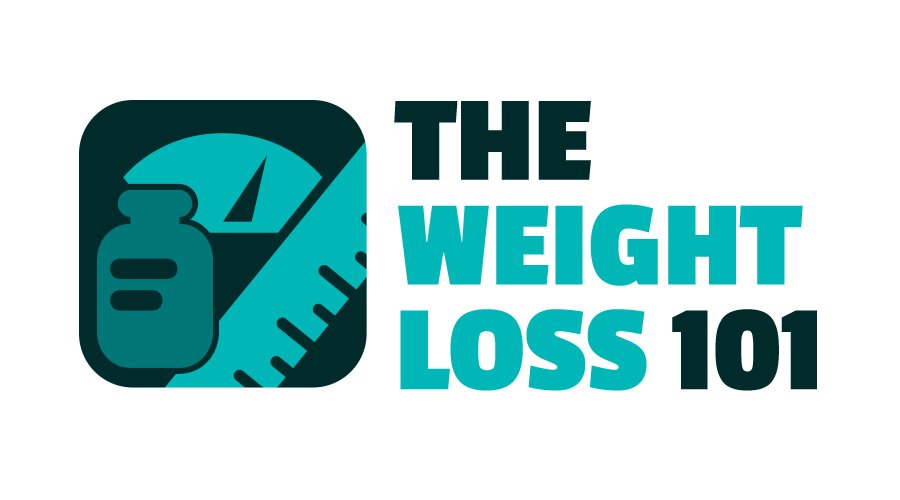As a journalist specializing in health and wellness, I am committed to uncovering the complex relationship between obesity prevention and eating disorders. Recognizing the shared risk factors and potential interconnectedness between these weight-related disorders is crucial in developing effective prevention strategies and interventions.
Dieting, media use, body image dissatisfaction, and weight-related teasing have emerged as important factors contributing to both obesity and eating disorders. By understanding how these shared risk factors impact individuals, we can work towards integrated prevention approaches that consider the overlapping nature of these conditions.
Key Takeaways:
- The prevalence of both obesity and eating disorders among children and adolescents is a significant concern in public health.
- Obesity prevention and eating disorder prevention efforts should address shared risk factors to be more effective.
- Dieting, media use, body image dissatisfaction, and weight-related teasing are potential shared risk factors to consider.
- An integrated approach to prevention that promotes healthy habits, positive body image, and media literacy can be effective.
- Collaboration between the fields of obesity and eating disorders is essential for developing comprehensive prevention strategies.
Prevalence of Obesity and Eating Disorders
The prevalence of overweight and obesity among children and adolescents is a growing concern in society today. According to recent studies, the rates of obesity have been steadily increasing in this age group. This rise in obesity poses significant health risks and long-term consequences for the affected individuals.
On the other hand, the prevalence of eating disorders, such as anorexia nervosa, bulimia nervosa, and binge eating disorder, although lower than obesity, is still a cause for concern. These disorders affect individuals of all ages and can have severe physical and psychological impacts.
While obesity and eating disorders may seem like separate issues, there is an interplay between them. It has been observed that individuals with obesity are more likely to develop eating disorders, and vice versa. This connection highlights the need for a comprehensive approach to tackle both problems simultaneously.
Obesity Prevalence
The prevalence of obesity among children and adolescents has reached alarming levels. In the United States, over 20% of youth aged 6 to 19 years are considered obese. This translates to approximately 13.7 million individuals in this age group.
Obesity is not just a cosmetic concern but also a significant risk factor for various health problems, including cardiovascular disease, type 2 diabetes, and certain types of cancer. It can also have a detrimental impact on mental health, leading to low self-esteem and body image dissatisfaction.
Eating Disorders Prevalence
While the prevalence of eating disorders is lower than that of obesity, it is still a significant public health issue. An estimated 20 million women and 10 million men in the United States will have an eating disorder at some point in their lives.
Anorexia nervosa is the least common but often the most severe eating disorder, affecting about 0.3% of young women. Bulimia nervosa is more prevalent, with a lifetime prevalence of approximately 1% to 1.5% in women. Binge eating disorder, the most common eating disorder, affects around 3.5% of women and 2% of men at some point in their lives.
Unhealthy Weight Control Behaviors
In addition to the prevalence of obesity and eating disorders, a substantial percentage of adolescents engage in unhealthy weight control behaviors. These behaviors include fasting, using diet pills, vomiting, and excessive exercise.
Research has shown that these unhealthy weight control behaviors can have serious physical and psychological consequences, including increased risk of eating disorders and disordered eating patterns, depression, and poor body image.
It is crucial to address not only the prevalence of obesity and eating disorders but also the underlying factors that contribute to these issues. By understanding the connection between obesity and eating disorders and implementing integrated prevention strategies, we can work towards reducing the prevalence of both and promoting a healthier future for children and adolescents.
The Link between Obesity Prevention and Eating Disorders

Cross-sectional studies have revealed a compelling connection between obesity prevention and eating disorders. Surprisingly, these two seemingly distinct conditions can coexist in the same individual, and individuals may transition from one condition to the other. This intriguing link urges researchers in the fields of obesity and eating disorders to collaborate, addressing the shared risk factors and developing integrated prevention interventions.
“The coexistence of obesity and eating disorders suggests a complex relationship between these weight-related disorders. By targeting shared risk factors, we can establish more effective prevention strategies.”
Shared risk factors between obesity and eating disorders include dieting, media use, body image dissatisfaction, and weight-related teasing. These factors, when present, increase the susceptibility of individuals to both conditions. Therefore, a holistic and comprehensive approach is necessary to tackle the intertwining nature of obesity prevention and eating disorders.
By acknowledging the inherent connection between these two health issues, professionals in the fields of obesity and eating disorders can work together to create integrated prevention programs. These programs can effectively address the shared risk factors and promote healthier lifestyles without inadvertently exacerbating one condition while attempting to prevent the other.
The Need for Collaboration
The collaboration between obesity prevention and eating disorder fields plays a crucial role in formulating evidence-based prevention strategies. By pooling their expertise and resources, professionals can establish a solid foundation for integrated interventions that target shared risk factors.
Recognizing the intersectionality of obesity and eating disorders allows for a more comprehensive understanding of the factors contributing to these conditions. It also facilitates the development of prevention programs that address the complex interplay between biological, psychological, and sociocultural factors.
Through collaborative efforts, researchers and healthcare professionals can pave the way for more effective prevention initiatives that reduce the prevalence of both obesity and eating disorders among individuals.
| Shared Risk Factors | Obesity Prevention Strategies | Eating Disorder Prevention Strategies |
|---|---|---|
| Dieting | Encouraging healthy eating habits and balanced diet | Promoting body acceptance and positive self-image |
| Media use | Promoting media literacy and critical thinking | Challenging idealized body images portrayed in media |
| Body image dissatisfaction | Fostering positive body image and self-acceptance | Providing education on healthy body image |
| Weight-related teasing | Creating a supportive and inclusive environment | Addressing weight-based stereotypes |
The table above illustrates some shared risk factors between obesity and eating disorders, along with corresponding prevention strategies. By targeting these shared risk factors, prevention efforts can have a synergistic effect in mitigating the risk of both obesity and eating disorders.
Dieting as a Risk Factor
Many adolescents and children engage in dieting behaviors, which may be linked to both obesity and eating disorders. Prospective studies suggest that dieting is not effective in preventing weight gain and may even increase the risk of obesity (check out my post on preventing weight gain here). Dieting behaviors are associated with the development of binge eating behaviors.
Adolescents and children often turn to dieting in an effort to lose weight or maintain a certain body image. However, restrictive diets can have detrimental effects on both physical and mental health. Rather than achieving the desired results, dieting can lead to weight fluctuation, increased body dissatisfaction, and the onset of disordered eating patterns.
“A growing body of research indicates that dieting is a risk factor for both obesity and eating disorders. Restrictive eating behaviors can disrupt the body’s natural hunger and fullness cues, leading to a dysfunctional relationship with food.”
Dieting can set off a cycle of restriction and overconsumption, where individuals may feel deprived and eventually succumb to binge eating episodes. This harmful pattern can contribute to weight gain, a sense of failure, and negative emotions. It’s important to note that dieting is not a sustainable or healthy approach to weight management.
Instead of focusing on restrictive diets, a balanced approach that promotes mindful and intuitive eating is recommended. This approach encourages individuals to listen to their bodies’ hunger and fullness signals, make informed food choices, and adopt a healthy relationship with food.
The Link Between Dieting and Binge Eating
Dieting behaviors have been strongly associated with the development of binge eating behaviors. Binge eating disorder is characterized by recurrent episodes of consuming large quantities of food in a short period of time, accompanied by a feeling of loss of control.
Studies have shown that individuals who engage in dieting are at a higher risk of developing binge eating behaviors. Restriction and deprivation can create a psychological drive to overeat and compensate for perceived “forbidden” foods. This can lead to a cycle of guilt, shame, and further restrictive behaviors, perpetuating the development of disordered eating patterns.
“Dieting can trigger a cascade of negative emotions and behaviors, such as binge eating, that can worsen the risk of weight-related disorders. It’s important to address underlying psychological and emotional factors that drive disordered eating.”
By discouraging dieting and promoting a positive relationship with food, individuals can reduce the risk of both obesity and eating disorders. Education on mindful eating practices, body acceptance, and self-care can empower individuals to make informed choices about their health and well-being.
Next, we’ll explore the role of media use and body image dissatisfaction in the development of obesity and eating disorders.
Media Use and Body Image Dissatisfaction

Media plays a significant role in shaping our perceptions of body image and can have a profound impact on individuals’ self-esteem and body satisfaction. Exposure to idealized body images, often portrayed in advertisements, movies, and social media, has been linked to body dissatisfaction and the development of unhealthy weight control behaviors. This holds true for both individuals with obesity and those with eating disorders.
It is no secret that the media often perpetuates unrealistic beauty standards, depicting models and celebrities with slim and toned bodies. These images create unrealistic expectations and can contribute to feelings of inadequacy, dissatisfaction, and a desire to attain an unattainable ideal. As a result, individuals may resort to unhealthy behaviors such as extreme dieting, excessive exercising, or even engaging in disordered eating patterns.
“The constant bombardment of flawless bodies can lead to body dissatisfaction, low self-esteem, and even the development of eating disorders,” says Dr. Emily Johnson, a renowned expert in body image psychology.
To counter the negative influences of media on body image and prevent the onset of obesity and eating disorders, it is essential to promote media literacy and critical thinking skills. By teaching individuals to critically analyze and question the messages conveyed by media, we can empower them to resist idealized portrayals and develop a healthier relationship with their own bodies.
Media Literacy and Critical Thinking: Key Components of Prevention Efforts
Media literacy programs aim to educate individuals about the techniques used in media, such as airbrushing, editing, and manipulating images, to create unrealistic beauty standards. By understanding these strategies, individuals can become more discerning consumers of media and recognize that what they see does not always reflect reality.
Critical thinking skills, on the other hand, enable individuals to challenge societal norms and question culturally imposed beauty standards. By fostering critical thinking skills, individuals can develop a more holistic understanding of beauty, emphasizing uniqueness, diversity, and healthy body attitudes.
Table: Media Influence on Body Image Dissatisfaction
| Media Influence Factors | Effects on Body Image |
|---|---|
| Exposure to idealized body images | Risk of body dissatisfaction and unhealthy weight control behaviors |
| Limited representation of diverse body types | Undermines body acceptance and promotes comparison |
| Glorification of extreme thinness | Encourages the pursuit of unattainable beauty ideals |
| Negative portrayal of overweight individuals | Contributes to weight stigma and body shame |
By incorporating media literacy and critical thinking skills into obesity prevention and eating disorder prevention efforts, we can empower individuals to resist the pressures of media and foster a positive body image. Alongside other prevention strategies such as promoting healthy habits and addressing weight-related teasing, media literacy and critical thinking skills serve as vital tools in our collective efforts to combat body image dissatisfaction and promote overall well-being.
Weight-related Teasing

Weight-related teasing, such as bullying or derogatory comments about body weight, is a pervasive issue that can have significant impacts on individuals’ mental and physical well-being. It is strongly associated with body dissatisfaction, disordered eating behaviors, and the development of both obesity and eating disorders.
Weight-related teasing can be a harmful form of social stigma that perpetuates negative attitudes towards body image and weight. It can lead to low self-esteem, depression, anxiety, and unhealthy weight control practices.
Efforts to reduce weight-related teasing are crucial in comprehensive prevention strategies for obesity and eating disorders. By addressing this issue, we can create a safer and more supportive environment that promotes positive body image and healthy behaviors.
Reducing weight-related teasing requires a multi-faceted approach, involving individuals, communities, schools, and healthcare providers. Some effective strategies that can be implemented include:
- Implementing anti-bullying policies and programs in schools to create a supportive and inclusive environment.
- Providing education and awareness campaigns to promote empathy, respect, and acceptance of diverse body sizes and shapes.
- Training teachers, counselors, and other professionals to recognize and address weight-related teasing effectively.
- Encouraging open dialogue and communication among peers, parents, and educators about the negative consequences of weight-related teasing.
By implementing these strategies and fostering a culture of acceptance and respect, we can help prevent weight-related teasing and contribute to the overall well-being of individuals affected by obesity and eating disorders.
Prevention Strategies for Obesity and Eating Disorders

When it comes to tackling the growing concerns of obesity and eating disorders, it is crucial to implement prevention strategies that address both conditions simultaneously. Integrated prevention interventions have shown promise in promoting positive outcomes for individuals at risk. These strategies focus on promoting healthy habits, fostering positive body image, promoting media literacy, and addressing weight-related teasing.
One effective approach is the implementation of school-based interventions. These programs can provide education on nutrition, physical activity, and body positivity. They can also create supportive environments that encourage healthy behaviors and discourage weight-related teasing. By targeting children and adolescents within these settings, we can reach a large population and instill long-lasting healthy habits.
Community programs also play a vital role in prevention efforts. These initiatives can involve local organizations, recreation centers, and community health clinics. They offer opportunities for individuals of all ages to engage in physical activities, receive nutrition education, and access resources for mental well-being. By creating a supportive community environment, we can reinforce healthy behaviors and reduce the risk of obesity and eating disorders.
Family-based interventions are another valuable component of prevention strategies. By involving parents and caregivers, we can influence the home environment and provide a positive role model for children. These interventions may include family meals, shared physical activities, and open discussions about body image and self-esteem. By promoting healthy habits as a family unit, we provide a strong foundation for preventing both obesity and eating disorders.
To further emphasize the importance of integrated prevention, let’s take a look at a table that highlights key prevention strategies and their outcomes:
| Prevention Strategies | Outcomes |
|---|---|
| Promoting healthy eating habits | Reduces the risk of obesity and disordered eating |
| Fostering positive body image | Improves self-esteem and reduces the likelihood of developing eating disorders |
| Promoting media literacy | Encourages critical thinking and reduces the impact of unrealistic body ideals |
| Addressing weight-related teasing | Helps create a supportive environment and reduces the risk of body dissatisfaction and disordered eating |
By implementing these prevention strategies, we can work towards reducing the prevalence of obesity and eating disorders. It is important to remember that prevention requires a comprehensive and coordinated effort from various stakeholders, including healthcare providers, educators, families, and the community. Together, we can make a significant impact in promoting healthy lifestyles and preventing these weight-related disorders.
Importance of Balanced Approach for Prevention

A balanced approach to prevention is crucial when addressing both obesity prevention and eating disorder prevention. It is essential to avoid inadvertently causing one disorder while trying to prevent another. By taking a comprehensive and balanced approach, we can promote overall health and well-being, while reducing the risk of both obesity and eating disorders.
One key aspect of a balanced approach is promoting healthy habits without promoting restrictive dieting. Instead of focusing solely on weight loss, the emphasis should be on fostering a positive relationship with food and encouraging a varied and balanced diet. This approach ensures that individuals develop healthy eating patterns without resorting to extremes, which can potentially contribute to the development of eating disorders.
“A balanced approach to prevention is crucial when addressing both obesity prevention and eating disorder prevention.”
Promoting body acceptance and appreciation is another important component of a balanced approach to prevention. Encouraging individuals to embrace their bodies at any size promotes positive body image and reduces the risk of developing disordered eating behaviors. By challenging weight-based stereotypes and promoting self-acceptance, we can foster a healthier relationship with our bodies and prevent both obesity and eating disorders.
In addition, creating a positive and inclusive environment is vital in preventing obesity and eating disorders. This includes promoting inclusive language and attitudes that focus on health rather than weight. By celebrating diversity and valuing all individuals regardless of their body size or shape, we can create a supportive environment that promotes overall well-being and discourages the development of weight-related disorders.
“A balanced approach to prevention is crucial when addressing both obesity prevention and eating disorder prevention.”
By adopting a balanced approach to prevention, we can effectively address the complex relationship between obesity and eating disorders. This approach recognizes the importance of promoting healthy habits, fostering body acceptance, and creating an inclusive environment. It ensures that prevention efforts are comprehensive and considerate of all individuals, promoting overall health and well-being.
| Benefits of a Balanced Approach | Risks of an Imbalanced Approach |
|---|---|
| Promotes overall health and well-being | May inadvertently contribute to the development of eating disorders |
| Fosters positive body image and self-acceptance | May promote body dissatisfaction and disordered eating behaviors |
| Creates an inclusive and supportive environment | May perpetuate weight-based stereotypes and discrimination |
Promoting Healthy Habits to Prevent Obesity and Eating Disorders

To effectively prevent obesity and eating disorders, it is crucial to focus on promoting healthy habits that support overall well-being. By adopting a comprehensive approach that encompasses healthy eating, regular physical activity, adequate sleep, and stress management, we can empower individuals to make positive choices for their physical and mental health.
1. Healthy Eating Patterns: Education about nutrition and the importance of a balanced diet plays a critical role in obesity and eating disorder prevention. Encourage individuals to consume a variety of nutrient-dense foods, including fruits, vegetables, whole grains, lean proteins, and healthy fats. Provide resources and information on portion control, mindful eating, and the benefits of a well-rounded diet.
2. Regular Physical Activity: Engaging in regular physical activity is essential for maintaining a healthy weight and promoting overall well-being. Encourage children and adolescents to engage in at least 60 minutes of moderate to vigorous physical activity daily. Provide options such as team sports, dance classes, or outdoor activities to make exercise enjoyable and accessible.
3. Adequate Sleep: Sufficient sleep is vital for maintaining a healthy weight and supporting emotional well-being. Encourage individuals to establish regular sleep patterns and prioritize getting the recommended amount of sleep each night. Provide tips for creating a sleep-friendly environment and adopting healthy sleep habits.
4. Stress Management: Chronic stress can contribute to both obesity and eating disorders. Teach individuals effective stress management techniques, such as deep breathing exercises, meditation, yoga, or engaging in hobbies and activities that promote relaxation (see my post here). Encourage open communication and provide resources for seeking professional help if needed.
By intentionally promoting these healthy habits, we can create a supportive environment that fosters a positive relationship with food, body image, and overall well-being. Preventive efforts should focus on education, empowerment, and addressing the underlying factors that contribute to obesity and eating disorders.
Quote:
“Promoting healthy habits is the key to preventing obesity and eating disorders. By empowering individuals to make positive choices in their daily lives, we can create a generation of healthier and happier individuals.” – Dr. Sarah Johnson, Clinical Nutritionist
| Obesity Prevention | Eating Disorder Prevention | |
|---|---|---|
| Healthy Eating | Encourage balanced diets Educate about nutrition |
Promote positive body image Foster a healthy relationship with food |
| Physical Activity | Promote regular exercise Engage in active lifestyles |
Encourage healthy coping mechanisms Provide alternatives to restrictive behaviors |
| Sleep | Highlight the importance of sleep Establish healthy sleep habits |
Address sleep disturbances Support emotional well-being |
| Stress Management | Teach stress reduction techniques Foster emotional resilience |
Promote effective ways to manage stress Encourage self-care practices |
Incorporating these healthy habits into daily life supports not only physical health but also positive body image, self-esteem, and overall well-being. By taking a proactive approach to prevention that addresses the root causes of obesity and eating disorders, we can pave the way for a healthier future (check this post out).
The Role of Parents, Schools, and Healthcare Providers

Parents, schools, and healthcare providers play a critical role in preventing obesity and eating disorders among children and adolescents. By working together, these key stakeholders can create a supportive and empowering environment that promotes healthy habits and positive body image.
Parents
As primary caregivers, parents have a significant influence on their children’s behaviors and attitudes towards food and body image. Here are some ways parents can contribute to obesity prevention and eating disorder prevention:
- Modeling healthy behaviors: Parents can serve as role models by eating a balanced diet, engaging in regular physical activity, and practicing self-acceptance.
- Creating a supportive home environment: Providing a supportive and non-judgmental atmosphere can help children develop a healthy relationship with food and their bodies.
- Monitoring media use: Parents should be aware of their children’s media consumption and guide them towards age-appropriate and body-positive content.
Schools
Schools play a crucial role in promoting the health and well-being of students. They can implement various strategies to prevent obesity and eating disorders:
- Comprehensive health education programs: Schools can integrate nutrition education, physical education, and body image curriculum to provide students with the knowledge and skills to make healthy choices.
- Creating supportive environments: Schools should foster a culture of inclusivity and respect, discouraging weight-based teasing and promoting body diversity.
- Encouraging physical activity: Schools can provide opportunities for students to engage in regular physical activity through physical education classes, sports programs, and active recess breaks.
Healthcare Providers
Healthcare providers, including pediatricians, can play a significant role in identifying and addressing obesity and eating disorders. Some ways they can contribute to prevention efforts include:
- Screening for eating disorders: Healthcare providers should routinely screen children and adolescents for signs of disordered eating and body image concerns.
- Providing early interventions: Timely interventions can help prevent the escalation of eating disorders and support individuals in developing a healthy relationship with food and their bodies.
- Collaborating with schools and parents: Healthcare providers can work closely with schools and parents to develop comprehensive prevention strategies and provide guidance on nutrition and healthy habits.
By actively involving parents, schools, and healthcare providers in obesity prevention and eating disorder prevention, we can create a holistic approach that addresses the underlying factors contributing to these weight-related disorders. Together, we can empower children and adolescents to lead healthy and fulfilling lives.
Conclusion
The prevention of obesity and eating disorders is a complex challenge that requires an integrated approach. By addressing shared risk factors and promoting a balanced approach to healthy habits, we can make significant progress in reducing the prevalence of these weight-related disorders among youth.
Collaboration between the fields of obesity and eating disorders is essential in developing effective prevention strategies and interventions. By sharing knowledge, expertise, and resources, we can create comprehensive programs that address the underlying factors contributing to both obesity and eating disorders.
Key areas of focus include promoting positive body image, fostering media literacy, and encouraging healthy habits. By challenging societal beauty standards, teaching critical thinking skills, and promoting self-acceptance, we can help young people develop a positive relationship with their bodies and reduce the risk of developing disordered eating behaviors.
Additionally, promoting healthy eating patterns, regular physical activity, adequate sleep, and stress management are crucial. Educating young people about nutrition, without promoting restrictive or fad diets, empowers them to make informed choices about their health.




